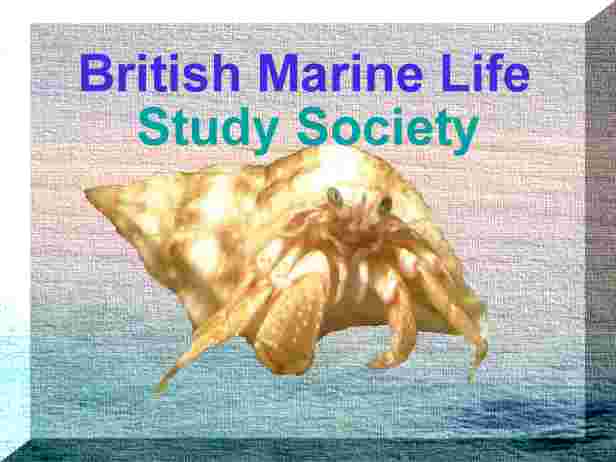
|
NEWS BULLETIN FOR THE ADUR VALLEY |
| LOCAL
ORGANISATIONS |
| LOCAL RESIDENTS PAGE |
| Adur Flood Plain |
| Chalk Downs |
| Coastal Fringe |
| Intertidal (Seashore) |
| Nature
Notes for
Lancing Ring |
| River Adur Estuary |
| River Adur |
| Sea (off Sussex) |
| Town & Gardens |
| Widewater Lagoon |
| AREA MAP |
| Shermanbury (Adur Valley) |
|
|
|
|
|
|
|
|
|
|
|
|
|
|
|
|
|
|
|
|
|
|
|
|
|
|
|
|
|
|
|
|
|
|
|
|
|
|
|
|
|
|
|
|
|
|
|
|
|
|
|
|
|
|
|
|
|
|
|
|
|
|
|
|
|
|
|
|
|
|
|
|
|
|
| 55 | 56 | 57 |
| 58 |
|
|
| 61 |
|
|
|
|
|
|
|
|
|
|
| 70 | 71 | 72 |

This is the first published
Electronic Newspaper for
Shoreham-by-Sea and the
Adur Valley & District, West Sussex, England
Local News29 September 2001
Marlipin's Museum closed on Saturday 29 September 2001 and will not be opening until 2003. This is because of the building of the new adjunct at the rear.
Planning Application: SU219/01/TP
Round the World by Helicopter
Simon Oliphant-Hope completes his round the world trip (he set off on
4 September 2001) on an Eastern Atlantic MD 900 Explorer helicopter. He failed to break the record for the shortest journey (24.5 days) because he was prevented from entering American air space over Alaska because of the restrictions imposed after the Terrorist Air Attack on America of 11 September 2001.8 May 2001 (belated report):
There was a meeting between the Environmental Agency, with contractors, Halcrow, and the Friends of Widewater Lagoon over the sea defences planned for the shingle between the lagoon and the sea, and the ecological impact on Widewater. The transcript is on the following site (click on the text):
FOWL
South Downs National Park : Proposed Area
http://www.countryside.gov.uk/reception/papers/SDmap1.htm
Old Boundaries:
http://www.countryside.gov.uk/reception/papers/Areaofsearchmap.jpg
Click on the URL for the complete map
West Sussex County Council announce most paths are now open, unless they are inhabited or used by farm livestock, or farm animals are nearby.
The cycle path from Old Shoreham is officially open.
Please send any comments to: Andy Horton
Glaucus@hotmail.com
Wildlife Notes
NATURE NOTES 2001 WINTER JANUARY - MARCH SPRING APRIL - JUNE SUMMER JULY - SEPTEMBER AUTUMN OCTOBER - DECEMBER 29 September 2001
As I sat in the office gazing through the window, a Grey Heron settled on
the rooftop of the bungalow diagonally opposite us. The two Crows were not happy and tried to dislodge it without much effect. The small garden pond of Barry the Birdman are probably visible from that roof top. It is short flight from my Lancing garden to the wide expanses of New Monks Farm and its drainage ditches.Report by Ray Hamblett28 September 2001
In contrast to the previous week, the half tide was on the neaps, and the firmer muds banks near the Railway Viaduct were inhabited by nearly a hundred gulls. Almost all of these were Great Black-backed Gulls (70+) with a couple of Crows on an active scrounge, one Cormorant diving under and one fanning its wings on the bank, showing off its dirty-looking white belly, and it was joined by the diving bird. A few Black-headed Gulls were resting on the slow flowing river. There was a small flock (25+) of Dunlins wheeling around as usual. Mute Swans are resident throughout the year on the part of the River Adur spanned by the five bridges in Shoreham.
28 September 2001
After a spell of inclement weather with strong breezes throughout and many showers, as Brianne Reeve of Butterfly Conservation said on the walk at Lancing Ring, these conditions batter the butterflies about a lot. And it is the same exposure to the elements that helps the food plants, the Horseshoe Vetch of the Chalkhill Blue, which makes Mill Hill better than Lancing Ring for these butterflies. All this meant that I was not surprised at the complete absence of medium-sized butterflies on Mill Hill, although a few Red Admirals fluttered around the copse at the top.
Adur Butterfly Page
Blue Butterflies (Photographs 2001)
UK-LEPS Discussion Group (for Butterflies and Moths)On the cultivated upper downs a solitary tractor cut its furrow followed by Black-headed Gulls (200+) and Crows (40+).
On the footpath heading due west immediately south of the road bridge over the by-pass (TQ 208 064), I surprised a large (one metre long) adult olive-green Grass Snake was curled up and not that quick to slither into the ivy undergrowth. The nearest streams are 200 metres away down a very steep incline. This is only the second adult snake I have ever seen in Shoreham.
In the Adur valley there was a solitary Meadow Brown Butterfly in the damp meadow.Late September 2001
My Shermanbury garden in the Adur Valley, 14 miles north as the crow flies from Old Shoreham, was visited by Blue Tits, Great Tits, Greenfinches and Chaffinches.
On a countryside walk I spotted an unfamiliar butterfly with orange wings and black markings which I discovered was a Small Copper.
Shermanbury Bug Reports and PhotographsReport by Allen Pollard
21 September 2001
In the River Adur north of the Toll Bridge, the surface was rippled by shoals of young Sand Smelt, which scattered in many directions and there was a pronounced arrow-like disruption of the water surface, which probably indicated predation by a large fish, most likely to be from shoals of second year Bass.
British Marine Life Study Society
Correction to Adur Torpedo Vol. 3 Issue 25, <.AVB79.html>
6 August 2001
A large nectar-feeding hoverfly settled on the Buddleia bush in a garden in West Way, Lancing, (TQ 198 042) that is near the marshy land between Shoreham Airport and Lancing. The species was not positively identified and this is always tricky as there are at least 250 species of hoverfly found in northern Europe. It was a large species at about 14 mm long.
Bill Irwin identified this species as Volucella zonaria.Report by Steve BarkerHoverflies Comment
Hoverflies of the UK
Hoverflies (Syrphidae), tribe Volucellini
Volucella zonaria (in German, see the extract below):[Schwebfliege] of the genus [Volucella], especially V. zonaria and V. inanis is right big, [wespen-] respectively hornet-alike [Schwebfliegen], the throughout with hornets or wasps respectively with a [Hornissenschwärmer] could be confused. The larvae of these flies develop itself mainly in the [Detritus] under [Wespen-] and hornet-nests. Also in bumblebee-nests larvae of [Volucella] can [spp]. is found. How it creates these animals, not of the wasps attacks and kills to become, is unclear. Perhaps they have over a type "[Beschwichtigungs]" [Pheromon]. (Auto-translator)
Lancing Nature & History - September 2001 Newsletter
Lancing Ring Photographic Gallery for July
Poem or Literature
England and America in 1782
--------------------------------------------------------------------------------O thou that sendest out the man
To rule by land and sea,
Strong mother of a Lion-line,
Be proud of those strong sons of thine
Who wrench’d their rights from thee!
What wonder if in noble heat
Those men thine arms withstood,
Retaught the lesson thou hadst taught,
And in thy spirit with thee fought–
Who sprang from English blood!But thou rejoice with liberal joy,
Lift up thy rocky face,
And shatter, when the storms are black,
In many a streaming torrent back,
The seas that shock thy base!Whatever harmonies of law
The growing world assume,
Thy work is thine–the single note
From that deep chord which Hampden smote
Will vibrate to the doom.Historical Notes:
European colonization of the eastern seaboard of North America began in the early 17th century, gaining momentum as the rival nations, most notably the British and French, struggled for control of the new territory. The Treaty of Paris (1763) marked the final triumph of Britain, but by that time the British colonies, stretching from New England in the north to Georgia in the south, had become accustomed to a considerable measure of independence. British attempts to reassert central authority produced first discontent and then open resistance. The First Continental Congress met in 1774 to consider action to regain lost rights, and the first armed encounters at Lexington and Concord in April 1775 led directly to full-scale revolt and to the formal proclamation of the separation of the thirteen colonies from Britain, as the United States of America, in the Declaration of Independence (4 July 1776). In the War of Independence which lasted until 1783, the American cause was assisted by France and Spain. The war ended with the Peace of Paris (1783), which recognized US independence.---------------------------------------------------------
Excerpted from The Oxford Interactive Encyclopedia
Developed by The Learning Company, Inc. Copyright (c) 1997 TLC Properties Inc.
- Wildlife
Web Sites
Hoverflies
of the UK
Common
Dragonflies and Damselflies (photographs)
British
Dragonfly Society Species Checklist
Sussex
Bat Group
Butterflies
of Lancing
Adur
Butterfly Page
Shermanbury
(Adur Valley)
Butterfly
Conservation Society
Wildlife
& Conservation Links (West Sussex)
The British Marine Life Study Society has an alternative web site address for its Homepage only:
http://groups.yahoo.com/group/ukwildlife
British
Naturalists' Association (link)
Find
the Sites of Special Scientific Interest using this link:
Friends
of the Earth SSSI Navigator
- Historical
Snippets
Shoreham Markets
The
following is an extract from: http://www.usask.ca/history/cjh/mate_496.htm
In
general the earlier a market was established, the greater was its chance
of survival, but an early start did not always ensure a prosperous and
uneventful existence.* Steyning, on the banks of the River
Adur and on the boundary between the Downland and the Sussex Weald,
was an Anglo-Saxon borough with 123 houses at the time of Domesday.* Its
preeminence, however, was constantly challenged with the establishment
of other markets.
 The
de
Braose family planted two new boroughs in the area: one within a few
miles at Bramber and the other at New Shoreham on the coast. The Bramber
market never became a serious threat, but in the late thirteenth and early
fourteenth century, Shoreham forged ahead and became the major Sussex port
for the export of wool, with three times as many ships as Seaford and roughly
twice those of Sandwich.* In the end it was bad weather that brought about
Shoreham's downfall. Over the course of the fifteenth century
flooding and changes in the shape of the coastline made its harbour
less convenient. Its market contracted and in 1500 the profits from its
fair came to just 21d.*
The
de
Braose family planted two new boroughs in the area: one within a few
miles at Bramber and the other at New Shoreham on the coast. The Bramber
market never became a serious threat, but in the late thirteenth and early
fourteenth century, Shoreham forged ahead and became the major Sussex port
for the export of wool, with three times as many ships as Seaford and roughly
twice those of Sandwich.* In the end it was bad weather that brought about
Shoreham's downfall. Over the course of the fifteenth century
flooding and changes in the shape of the coastline made its harbour
less convenient. Its market contracted and in 1500 the profits from its
fair came to just 21d.*
In Anglo-Saxon and Anglo-Norman England most markets were not subject to seigniorial regulation, and much petty trading undoubtedly took place locally amongst villagers without leaving any record. Towns that enjoyed borough status, however, almost certainly possessed a market.
Extract
provided by Peter Weaver
The
links and image included in the extract were included by Andy
Horton and not present on the original web page.
- Words
of the Week
mojo | md | n.1 US local. Pl. -os. E20. [Prob. of Afr. origin: cf. Gullah moco witchcraft, magic, Fulfulde moco'o medicine man.] Magic, voodoo; a charm or amulet.
jihad | dhd, -had | n. Also jehad. M19. [Arab. jihad lit. 'effort'.] Religious warfare or a war for the propagation or defence of Islam; transf. a campaign or crusade in some cause.
jihad, usually translated from Arabic as 'holy war', literally 'struggle'. One of the basic duties of a Muslim, prescribed as a religious duty by the Koran and by tradition, is to struggle against external threats to the vigour of the Islamic community and also against personal resistance to the rules of divine law within oneself. Jihad in theory is controlled by the strict laws of war in Islam, which prescribe conditions under which war may be declared, usually against an enemy who inhibits the observance of the faith. In practice it has often been used by ambitious Muslim rulers to cloak political aims with religious respectability. Famous jihads include the early Arab conquests, resistance to the Crusades, and the conquests of the Hausa reformer, Uthman dan Fodio in northern Nigeria in the early 19th century. Those who die fighting in a jihad are accorded a martyr's place in heaven. In recent years, the concept of jihad has played a significant role in some Islamic fundamentalist and revivalist movements, justifying political violence or terrorism.
fatwa | fatw | n. Also fetwa. E17. [Arab. fatwa, f. 'afta decide a point of law: see MUFTI n.1] A (usu. written) decision on a point of Islamic law given by a mufti.
pastiche
| pasti | n. & v. L19. [Fr. f. as prec.] A n. A medley of various
things; spec. (a)a picture or a musical composition made up of pieces derived
from or imitating various sources; (b)a literary or other work of art composed
in the style of a well-known author, artist, etc. L19.
R.
GITTINGS Nearly every poemwas a pastiche of a different poet. Ashmolean
A 17th century pastiche made up fromtwo different Roman statues.
B
v.t. & i. Copy or imitate the style of (an artist, author, etc.). M20.
---------------------------------------------------------
Excerpted
from The Oxford Interactive Encyclopedia
Developed
by The Learning Company, Inc. Copyright (c) 1997 TLC Properties Inc.
- Star: Latest Virus Information
Computing
Net Support Site
(for computing problems) ****
http://computing.net/windows95/wwwboard/wwwboard.html
The upsurge of EFora
on all subjects (a
few have been recommended before in these bulletins) are an important way
in which the Internet
will change the world.
A list of recommended eFora
will appear soon. Please make any suggestions.
See the Profusion Search method below.
SHOREHAM AIRPORT NEWS
Archaeology in Sussex to AD 1500 ****
WSCC
LIBRARY *****
Excellent
and essential service with a full catalogue of books, CDs, videos,
on-line renewals, book ordering.
- The
Glaucus 2000 CD-ROM includes the complete Shoreham-by-Sea
and Adur Valley web sites, as well as shareware
and free programs

ADUR VALLEY EFORUM PAGE |
 |
Events
- Adur
On-line Events page
- http://appspace.nexus-solutions.net/arc/asp/diary/diaryoutput.asp
- Please send in any details of local events.
- Web
Sites
American
Heritage Dictionary of the English Language:
Fourth
Edition *****
- SPONSORSHIP OPPORTUNITY
For any company or organisation wanting nationwide green publicity, there is an opportunity to sponsor the journal "Glaucus" of the British Marine Life Study Society.
There remains sponsorship opportunities on the BMLSS (England) web site and other publications, including Torpedo.
Sponsorship is also available for the Adur Torpedo Electronic News Bulletin and the Shoreham-by-Sea web pages (which preceded the Adur Resource Centre web site), which would be more suitable for a local firm(s).
Web Site Design Services are available from Hulkesmouth Publishing
Normal
advertisement rules apply.
Submissions
accepted by EMail only.
| 55 | Adur World Oceans Day Committee Meeting |
| 56 | Ropetackle - Group Consultation with SEEDA |
| 57 | Train Crash at Lancing |
| 58 | Ropetackle Outline Plan Initial Comments |
| 59 | Plane Crash at Sharpthorne |
| 60 | Foot & Mouth Disease Restrictions |
| 61 | Repair of the Old Fort |
| 62 | Plane Crash at Shoreham |
| 63 | HMS Shoreham |
| 64 | Foot & Mouth Disease Restrictions Update |
| 65 | Adur Festival 2001 Preview |
| 66 | Ropetackle Outline Plan - Objections |
| 67 | Shoreham May Day Celebrations |
| 68 | Ropetackle Outline Plans - Plan |
| 69 | Plane Crash at Lancing |
| 70 | Foot & Mouth Disease Restrictions Lifted - Footpaths Open |
| 71 | Escape of King Charles II Exhibition |
| 72 | Adur World Oceans Day Preview |
| 73 | Adur World Oceans Day |
| 74 | General Election |
| 75 | End of the Adur Festival |
| 76 | Plane
Crash Averted at Lancing
Conservative Independent Alliance |
| 77 | Farmer's Market |
| 78 | Ropetackle Public Meeting |
| 79 | Ropetackle Planning Meeting Reminder |
| 80 | Ropetackle Planning Meeting Report |
| 81 | |
| 82 | Shoreham
Air Show
350th Anniversary of the Battle of Worcester |
| 83 | |
| 84 | |
| 85 | Closure
of the Marlipins
Widewater Information Booth |
| 86 | Round the World by Helicopter |
Adur
Torpedo was written, designed and distributed by Andy
Horton.







